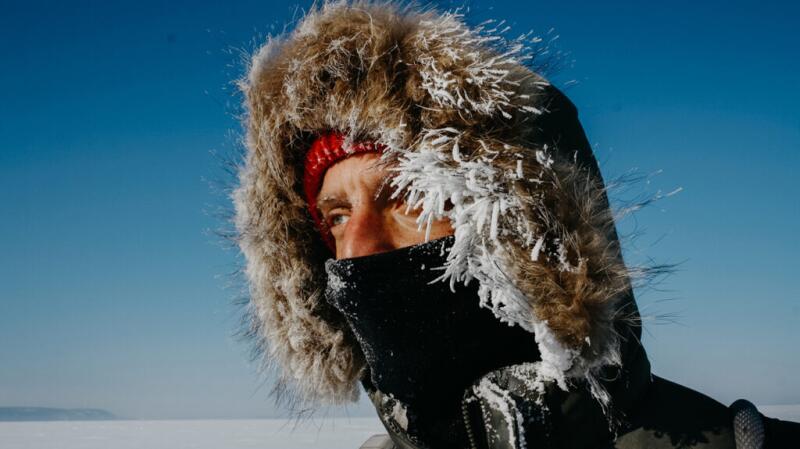Hypothermia occurs when the body’s temperature drops too low, due to cold stress and an inability to make enough heat. This affects the function and health of the body and its structures.
For example, hypothermia can lead to increases in metabolism, breathing, and heart activity, according to a
However, prompt and effective treatment of hypothermia can improve the outlook.
This article will explain hypothermia and low body temperature, including its symptoms and causes. It will also discuss the first aid, prevention, and treatment of hypothermia, as well as answer some frequently asked questions.
At what temperature is hypothermia likely?

According to researchers of the
The Centers for Disease Control and Prevention (CDC) notes that while hypothermia is particularly likely at very cold temperatures, it can also occur at cool temperatures
Researchers suggest that the lower the temperature, the more severe the hypothermia and its symptoms can be.
Learn more about typical body temperature ranges and variations.
What are the signs of hypothermia and a low temperature?
Alongside a low body temperature and a feeling of being cold, hypothermia can cause the following symptoms:
- shivering
- exhaustion, extreme tiredness, and drowsiness
- decrease in consciousness
- confusion and disorientation
- memory loss
- low or irregular pulse
- fumbling hands or lack of coordination
- slurred speech
- glassy stare
- flushed or discolored skin
- skin that feels cold to the touch
Hypothermia can also cause a condition called frostbite. Frostbite, or cold burns, occurs when exposure to temperatures below 0°F causes tissue damage. Symptoms of frostbite include:
- skin sensations, such as tingling or pins and needles
- blistering of the skin
- skin discoloration, such as redness, blueness, paleness, or blotchiness
- swelling
- itching
- skin that feels hard and cold to the touch
- pain
Frostbite is a medical emergency.
Learn more about frostbite, including its symptoms, risks, and treatment.
Call 911 for symptoms of hypothermia
Hypothermia is a medical emergency. Seek immediate medical care or call 911 if you observe symptoms of hypothermia or suspect hypothermia in yourself or others.
While symptoms may develop gradually, hypothermia can also become severe very rapidly and often requires medical care to avoid or address complications.
What causes hypothermia?
Hypothermia happens when your body loses heat more quickly than it can generate heat.
It is possible to develop a low body temperature by losing heat to the surrounding area if the external temperature is lower than your body temperature. It can also occur due to losing heat due to the evaporation of liquids from the skin, such as sweat.
Additional factors that can cause a low body temperature and hypothermia include:
- fatigue
- cold environments, such as cold weather outside or cold indoor areas
- exposure to cold water, including wet clothing and submersion in cold water
- sweating in cold environments
- medical conditions, such as:
- metabolic conditions, including hypothyroidism and diabetes
- cerebrovascular conditions
- skin disorders
- nervous system conditions and injuries
- mental health conditions
- dementia
- drug use disorder
The use of certain substances can also contribute to hypothermia. These substances include:
- alcohol
- medications, such as:
- antidepressants
- sedatives
- anesthetics
- beta-blockers
- neuroleptics
When someone experiences hypothermia due to medical conditions, it is known as secondary hypothermia.
Some people are more likely to experience hypothermia and its complications. These people can include:
- infants and young children
- older adults
- people with underlying health conditions
- people who are less able to communicate, such as infants who cannot verbally express what they are feeling
First aid
Take the following steps for anyone showing symptoms of hypothermia:
- getting the person to a warm shelter
- seeking emergency medical attention or calling 911
- replacing any wet clothing with any available dry clothing or insulation
- warming the central area of the person’s body first, such as the chest, neck, head, and groin, before addressing extremities
- using heat sources such as:
- warm beverages without alcohol or caffeine, if the person is completely conscious
- electric blankets
- hot water bottles or heat packs wrapped in cloth
- skin-to-skin contact under dry blankets or clothing
- avoiding the use of extreme heat and friction to warm a person
- closely and regularly monitoring the person’s breathing and pulse
- keeping the person dry
If someone appears dead, it is advisable to still attempt CPR and keep the person warm until you can access medical care.
How is hypothermia treated?
Hypothermia is treated by warming the body, keeping the person dry, and addressing any complications.
Warming a person’s body temperature requires care to avoid further injury. You should also avoid using extreme heat to warm yourself or others.
Treatments for hypothermia can include:
- replacement of wet clothing with dry clothing or insulation
- nutritional supplementation with glucose
- external rewarming using:
- insulation
- heated air units
- immersion in warm water
- internal rewarming using:
- airway rewarming with humidified air
- warm fluids
Further treatment may be necessary for secondary hypothermia or hypothermia that leads to complications. For example, if hypothermia causes a heart attack, oxygenation and circulatory support may be necessary.
What are the potential complications of hypothermia?
With prompt treatment, some can recover from hypothermia without experiencing severe complications.
However, when hypothermia is severe or prolonged, complications can occur. Complications of hypothermia include:
- ataxia
- cold diuresis
- organ damage and conditions, such as:
- pancreatitis
- pulmonary edema
- acute kidney injury
- frostbite and complications of frostbite, such as amputation and infection
- cardiovascular conditions, such as arrhythmia and heart attack
- coma
- death
Additionally, hypothermia can cause confusion, memory loss, and disorientation, so it may be difficult to seek help independently. This can delay prompt treatment and may affect your outlook.
This confusion can also cause unsafe or irrational behaviors, such as a lack of concern for the cold or paradoxical undressing. Paradoxical undressing causes people to take off their clothes due to feeling a sudden warm sensation,
However, the outlook for hypothermia can be more positive if your heart and cardiovascular system remain stable and you receive appropriate medical care. In this case, people may have a survival rate of
How do you prevent hypothermia?
You can take many steps to prevent yourself from experiencing low body temperature or hypothermia when you are exposed to cold temperatures. These can include:
- avoiding exposure to or limiting time in cold environments as much as possible
- staying with a buddy while in a cold environment and monitoring each other’s condition
- wearing warm layers, including warm, waterproof shoes and clothing that covers your head and hands
- wearing clothes recommended for the cold, such as wicking layers under wool and waterproof coats
- adequately heating your home or at least one room of the house for you to be in during cold weather, if possible
- keeping active but avoiding overexertion that causes sweating and wet clothing
- avoiding getting wet or changing wet clothing as quickly as possible if you do get wet
- drinking plenty of warm fluids
- eating regular and balanced meals
- avoiding going near bodies of cold water
- asking your doctor if any medications you take may affect your body temperature regulation
- limiting alcohol, caffeine, and nicotine intake
Other frequently asked questions
Meredith Goodwin, MD, has reviewed the following frequently asked questions.
How long does it take to recover from hypothermia?
The time it takes to recover from hypothermia may depend on both the severity of your condition and whether you experience any complications.
Severe complications or permanent damage may require long-term treatment.
Some immediate treatment methods, such as gradual exposure to warmer temperatures, may also take hours. This is because it can be necessary to increase the temperature you are exposed to by only a few degrees every hour to avoid complications.
Can you have permanent damage from hypothermia?
Severe cases of hypothermia, or hypothermia that does not receive effective care, can lead to permanent damage from complications.
This can include organ damage and frostbite, which can both cause permanent effects. Additionally, in some cases, severe or untreated hypothermia can result in death.
Can hypothermia cause death quickly?
Hypothermia can progress rapidly and quickly become life threatening.
However, how quickly hypothermia starts and how quickly it can lead to death may depend on many factors, such as:
- the temperature you are exposed to and for how long
- how quickly the temperature drops
- how long you have been hypothermic
- the availability of treatment and support
- whether you experience any other health conditions or cardiovascular complications
- whether you have consumed alcohol
- whether you are submerged in water
Summary
Hypothermia, or a low body temperature, refers to when the core temperature of the body becomes dangerously low at less than 95°F. This can occur due to exposure to the cold or conditions that affect the body’s ability to maintain its temperature.
Hypothermia is a medical emergency and can have severe complications that are life threatening. First aid for hypothermia includes gradually warming the body, removing the person from exposure to the cold, and changing wet clothing for dry.
Call 911 for any suspected symptoms of hypothermia.






